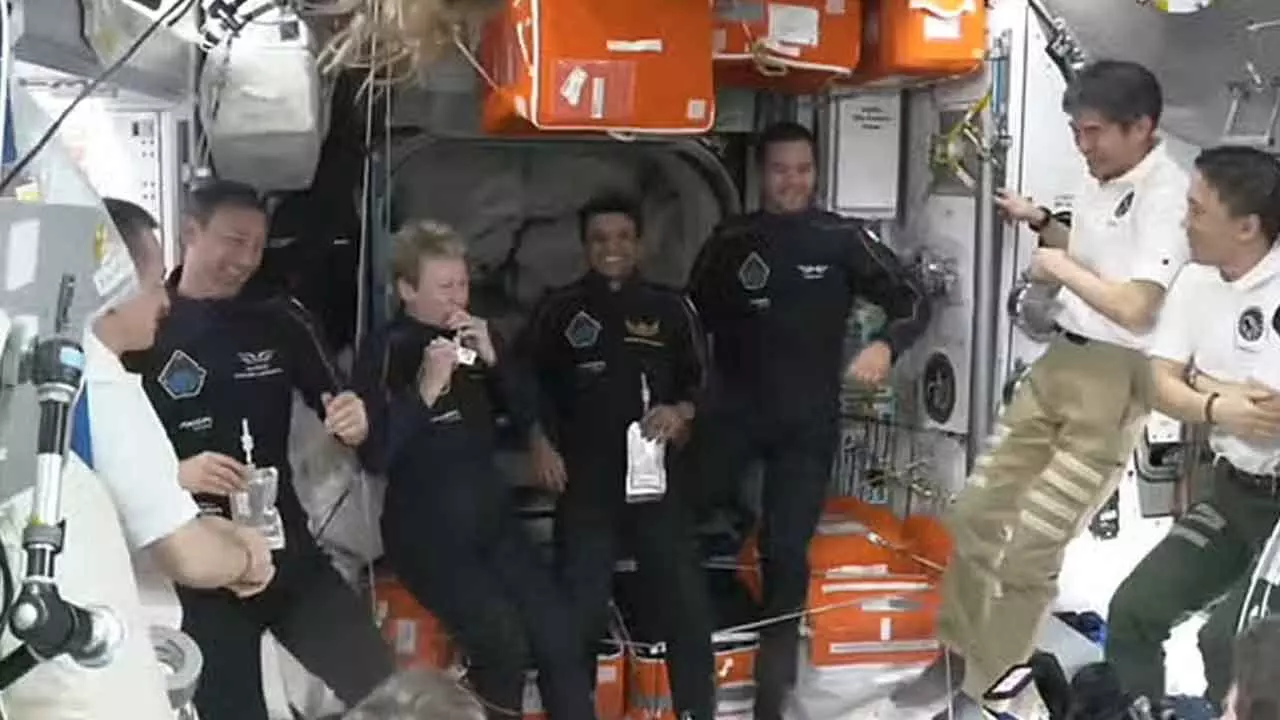India Reaches for the Stars: Shubhanshu Shukla Makes History Aboard the ISS
Discover how Group Captain Shubhanshu Shukla made history as the first Indian in commercial human spaceflight, docking with the ISS aboard Dragon capsule Grace. Learn about the Axiom-4 mission, groundbreaking experiments, and India's giant leap into the future of space exploration.
India Reaches for the Stars: Shubhanshu Shukla Makes History Aboard the ISS

The roar from Cape Canaveral echoed across the globe, launching not just a rocket but a new era for India in space. Roughly 28 hours later, after a journey of over 400 kilometers above Earth, the Dragon capsule Grace gracefully docked with the International Space Station (ISS) at 4:02 PM on Thursday.
Among the crew, quietly making history, was Group Captain Shubhanshu Shukla, affectionately known as "Shux." He entered the orbiting laboratory at 5:44 PM, just a minute after commander Peggy Whitson, marking a pivotal moment for both him and the nation. India has officially arrived at the forefront of commercial human spaceflight.
"Welcome, Earthlings," veteran astronaut Whitson radioed earlier as the Grace capsule soared over Europe during the Axiom crew's first full day in orbit. Their in-flight broadcast captured stunning views as they passed over Italy, Sicily, the Greek islands, and the Balkans. Before docking, a candid Shukla shared, "I'm learning everything anew: how to walk, how to eat..."
Launched from NASA's Kennedy Space Center (KSC), Grace meticulously executed a series of orbit-raising maneuvers, perfectly aligning with the ISS for docking. In his initial full in-flight transmission, Shukla reflected on his journey, "Grace has been very kind. I wasn't feeling great when we got shot into the vacuum. But since yesterday, I have apparently been sleeping a lot – which is a good sign! I am learning everything anew – how to walk, how to eat, how to be." The Lucknow native even acknowledged the value of making mistakes, and finding comfort in seeing others do the same.
Back on Earth, the ISRO Ax-4 team, who had briefly returned to India after the original launch delay, was hard at work at the mission control center in Houston. An ISRO scientist shared their excitement, "We had around eight people on consoles and we were excited and anxious. We are elated at the successful docking."
After hours of cruising, Grace began a slow, measured approach once it was within range. Every maneuver unfolded flawlessly, with ground controllers and onboard systems meticulously assessing progress and issuing "go" commands at each stage. Given the smooth approach, both the ground station and the ISS allowed Grace to skip two planned halts, accelerating the docking by almost half an hour. At approximately 20 meters, Grace made its final approach, using an array of laser-based sensors and cameras to align perfectly with the station's docking port. The spacecraft then moved forward at a mere few centimeters per second, making gentle contact.
The process unfolded in two crucial steps: first, the soft capture, where magnets delicately pulled Grace into position, followed by the hard capture, where mechanical latches and hooks securely fastened the spacecraft. A pressure-tight seal was then formed, creating a seamless connection between Grace and the ISS.
Over the next 14 days, the crew is set to embark on a packed schedule, conducting over 60 microgravity experiments, engaging in outreach programs, and participating in collaborative science activities.

